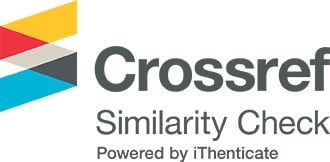Xây dựng quy trình định lượng ketoconazol trong phức hợp ketoconazol-hydroxypropyl-β-cyclodextrin bằng phổ UV-Vis
Các tác giả
DOI: https://doi.org/10.59294/HIUJS.31.2024.675Từ khóa:
Ketoconazol (KTZ ), hydroxypropyl-β-cyclodextrin (HPβCD), UV-Vis, hấp thụ (A)Tóm tắt
Đặt vấn đề: Để phù hợp với định lượng ketoconazol (KTZ) trong phức bao, tiến hành xây dựng quy trình định lượng KTZ bằng phổ UV-Vis. Vật liệu và phương pháp: KTZ chuẩn, phức bao KTZ-HPβCD. Xây dựng và thẩm định quy trình định lượng KTZ trong phức bao KTZ-HPβCD bằng phương pháp đo phổ UV-Vis. Kết quả: Quy trình định lượng đạt tính tương thích hệ thống RSD (%) = 0.098 2%, giới hạn phát hiện (LOD): 0.6389 g/mL, giới hạn định lượng (LOQ): 1.936 g/mL, độ chính xác RSD = 0.593 < 2%, độ đúng nằm trong khoảng 95-105%. Kết luận: Phương pháp đo phổ hấp thụ UV-Vis phù hợp để định lượng KTZ trong phức bao KTZ-HPβCD.
Abstract
Introduction: To be suitable for quantifying ketoconazole (KTZ) in the inclusion complex, build a process to quantify KTZ using UV-Vis spectroscopy. Materials and methods: Standard KTZ, KTZ-HPβCD inclusion complex. Develop and validate the KTZ quantification process in the KTZ-HPβCD inclusion complex using UV-Vis spectroscopy. Results: The quantification procedure achieved system compatibility RSD (%) = 0.098 2%, limit of detection (LOD): 0.6389 g/mL, limit of quantification (LOQ): 1.936 g /mL , RSD repeatability = 0.593 < 2%, accuracy is in the range of 95-105%. Conclusion: The UV-Vis absorption spectroscopy method is suitable to quantify KTZ in the KTZ-HPβCD envelope complex.
Tài liệu tham khảo
[1] P. Chakravarty and K. Nagapudi, “The importance of water-solid interactions in small molecule drug development: An industry perspective”, Trends in Analytical Chemistry 140, 2021, https://doi.org/10.1016/j.trac.2021.116276.
DOI: https://doi.org/10.1016/j.trac.2021.116276[2] V. A. Saharan, V. Kukkar, M. Kataria, M. Gera and P. K Choudhury, “Dissolution Enhancement of Drugs. Part I: Technologies and Effect of Carriers”, International Journal of Health Research, 2(2), pp.107-124 (e222p3-20), 2009.
DOI: https://doi.org/10.4314/ijhr.v2i2.55401[3] V. J.Gharamaleki, A. Jouyban, H. Zhao, F. Martinez and Elaheh Rahimpour, “Solubility study of ketoconazole in propylene glycol and ethanol mixtures at different temperatures: A laser monitoring method”, Journal of Molecular Liquids 337, 2021, https://doi.org/10.1016/j.molliq.2021.116060.
DOI: https://doi.org/10.1016/j.molliq.2021.116060[4] Bộ Y tế, Dược thư quốc gia Việt Nam. Hà Nội: Nhà xuất bản Y học, tr.861-865, 2018.
[5] K. M. Sahu, S. Patra and S. K. Swain, “Host-guest drug delivery by β-cyclodextrin assisted polysaccharide vehicles: A review”, International Journal of Biological Macromolecules 240, 2023, https://doi.org/10.1016/j.ijbiomac.2023.124338.
DOI: https://doi.org/10.1016/j.ijbiomac.2023.124338[6] Bộ Y tế, Dược điển Việt Nam V. Hà Nội: Nhà xuất bản Y học, tr.537-541; PL 1.12, tr.PL18-PL19, 2017.
[7] A. Shayanfar and A. Jouyban, “Physicochemical characterization of a new cocrystal of ketoconazole”, Powder Technology, 262, pp.242-248, 2014. https://doi.org/10.1016/j.powtec.2014.04.072.
DOI: https://doi.org/10.1016/j.powtec.2014.04.072[8] F. Keramatnia, A. Jouyban, H. Valizadeh, A. Delazarand A. Shayanfar, “Ketoconazole ionic liquids with citric and tartaric acid: Synthesis, characterization and solubility study”, Fluid Phase Equilibria, 425, pp.108-113, 2016, http://dx.doi.org/10.1016/j.fluid.2016.05.016.
DOI: https://doi.org/10.1016/j.fluid.2016.05.016[9] S. Zadaliasghar, A. Jouyban, F. Martinez, M. B.Jalali and E. Rahimpour, “Solubility of ketoconazole in the binary mixtures of 2-propanol and water at different temperatures”, Journal of Molecular Liquids 300, 2020, https://doi.org/10.1016/j.molliq.2019.112259.
DOI: https://doi.org/10.1016/j.molliq.2019.112259Tải xuống
Tải xuống: 122











